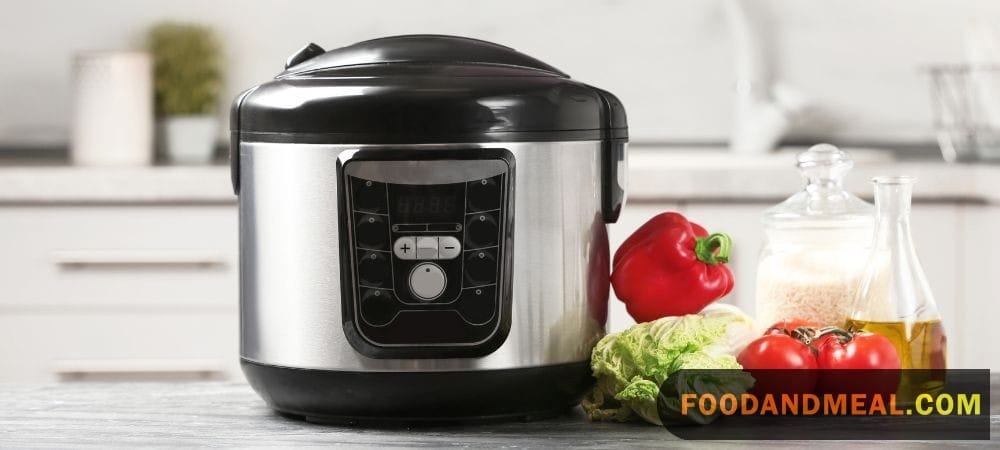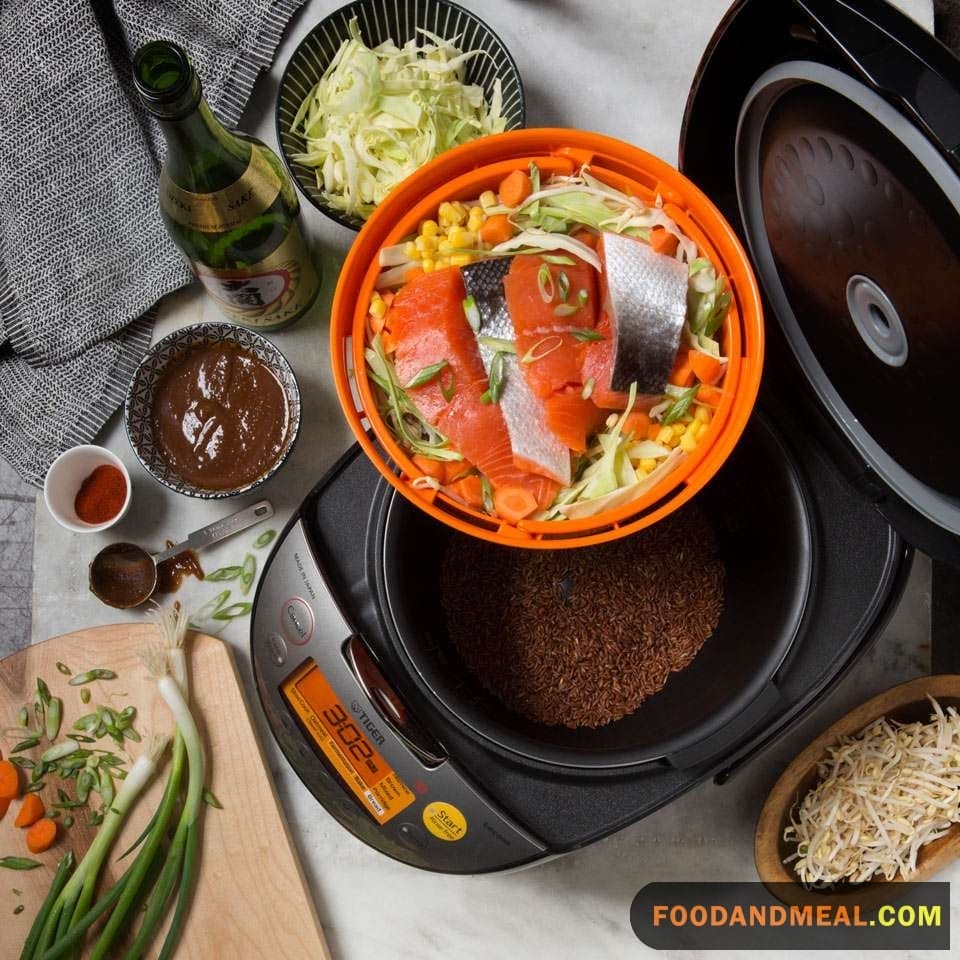In contrast to traditional pressure cookers from the 1950s, contemporary models, particularly electric ones like Instant Pot and Crock-Pot, boast advanced safety features that ensure ease of use and enhanced safety. However, should these safety measures falter, pressure cooker explosions have the potential to result in severe burn injuries. So, Are Pressure Cookers Safe? Follow this post of Food and Meal to know more detail!
Pressure Cookers, Instant Pots and Multicookers
Pressure cookers are available in both stovetop and electric variations, each utilizing steam pressure to expedite the cooking process. Stovetop pressure cookers, dating back to the 1950s, resemble pots with specialized lids featuring locks and rubber gaskets to establish a tight seal.
While stovetop versions generate higher temperatures and work at a swifter pace compared to electric counterparts, they lack some safety features, demanding vigilant monitoring due to pressure fluctuations.
In the comparison between stovetop and electric pressure cookers, stovetop models exhibit quicker heating but necessitate constant supervision. On the other hand, electric pressure cookers, often referred to as multicookers, take more time to reach pressure and cook food but incorporate additional safety features.
Prominent electric pressure cookers, such as the popular Instant Pot, serve as multicookers, featuring various settings like pressure cooking, slow-cooking, and yogurt-making. Unlike stovetop versions, electric cookers are plugged into the wall and boast advanced technology, including sensors and multiple valves to prevent excessive pressure buildup. While electric models have a longer cooking duration and don’t attain the same temperatures as stovetop counterparts, they offer the convenience of setting timers, allowing the machine to automatically cease cooking and gradually depressurize.
Well-known brands in the realm of electric multicookers include Instant Pot, Crock-Pot, Power Cooker XL, Breville, Ninja Foodi, and more.

Can Pressure Cookers Explode?
In general, using pressure cookers offers us a safe and efficient method for faster food preparation. However, in rare instances, pressure cookers equipped with faulty components or malfunctioning safety features may experience lid explosions. In such cases, hot food and liquid may forcefully eject from the cooker, posing a risk of burns or injuries to individuals in proximity.
We, as multicooker users, have observed manufacturers initiating product recalls due to component defects that jeopardize our safety, leading to potential burns from exploding pressure cookers. Some recalls were prompted by concerns related to fire hazards and electric shock risks.
Noteworthy pressure cooker recalls include:
- Crock-Pot: In November 2020, over 914,000 Crock-Pots were recalled as the cookers could pressurize even when the lid was not fully locked. The company received 99 reports of burn injuries ranging from first to third-degree burns.
- Breville: More than 35,000 Breville Slow Fast Cookers were recalled due to a defective sealing gasket that could result in an unexpected release of built-up pressure, posing a burn risk to those nearby.
- Instant Pot: We recall that Double Insight recalled approximately 1,000 multicookers in 2015 due to the risk of electric shock. Additionally, about 104,000 multicookers were recalled in 2018 due to a fire hazard.
Pressure Cooker Safety Features
In the 1950s, concerns arose as reports circulated about the potential dangers associated with improperly sealed stovetop pressure cookers. This apprehension resulted in a widespread shift away from the practice of pressure cooking during that era.
Fast forward to the present day, and we find ourselves in an era where modern pressure cookers are equipped with a myriad of safety features meticulously designed to mitigate the risks of explosions, fires, and other potential accidents. The inclusion and specifics of these safety measures may, of course, vary depending on the particular model and whether it falls under the category of a stovetop or electric cooker.
One prominent example is the Instant Pot, a versatile kitchen appliance championed by Instant Brands. According to the manufacturer, the Instant Pot incorporates an impressive array of 11 safety mechanisms. These encompass specialized sensors, strategically placed vents, and a secure locking lid—all working in tandem to provide users with a heightened level of safety and reassurance, particularly against the prospect of explosions during operation.
Delving into the broader landscape of modern pressure cookers, we discover a range of safety features that have become standard inclusions to ensure user well-being and overall appliance reliability. These features encompass, among others:
- Back-Up Vents or Overpressure Plugs: These mechanisms are designed to release excess pressure, preventing the buildup of pressure beyond safe limits.
- Expanding Rubber Gaskets: These gaskets play a crucial role in inhibiting the unlocking or removal of the lid when the contents within are under pressure, adding an extra layer of security.
- Lid Lock Mechanisms: An essential safety feature, these locks prevent the opening of the lid while the contents are pressurized, minimizing the risk of accidental exposure to high-pressure steam.
- Pressure Regulators: Ensuring that the pressure within the cooker does not escalate to hazardous levels, pressure regulators are instrumental in maintaining a safe cooking environment.
- Leaky Lid Detection Systems: This feature acts as a proactive measure, identifying any potential issues with the lid seal and alerting users to prevent further complications.
- Temperature Probes and Fuses: These components serve as a fail-safe against excessively high temperatures, adding an extra layer of protection against overheating and potential hazards.
In essence, the evolution of pressure cooker technology has been marked by a commitment to enhancing user safety. The incorporation of these advanced safety features not only addresses historical concerns but also empowers individuals to embrace the efficiency and convenience of pressure cooking with confidence in the modern kitchen.

Using a Pressure Cooker Safely
Navigating the nuances of pressure cookers, distinct from conventional pots and pans, may require a period of adjustment. While it’s impossible to completely eliminate the potential for accidents stemming from defective pressure cookers, there are proactive measures one can take to minimize such risks.
Modern pressure cookers have revolutionized home cooking, offering a convenient means to prepare delicious meals swiftly. By adhering to a set of safety guidelines, not only can you enhance the effectiveness of your pressure cooker, but you can also prioritize the safety of yourself and those around you.
Here are some comprehensive do’s and don’ts to ensure a safe and efficient pressure cooking experience:
Do
Regular Inspection: Periodically check the rubber gaskets, valves, and seals to ensure they are in optimal working condition, free from any obstructions before initiating the cooking process.
- Adequate Liquid Usage: Ensure the use of an ample amount of liquid in your recipes, as insufficient liquid may lead to undesirable consequences such as burning or a failure to generate sufficient pressure.
- Hygiene Maintenance: Adhere to the provided instructions for keeping your pressure cooker clean. Regular cleaning contributes to the longevity and efficiency of the appliance.
- Pressure Release Protocol: Familiarize yourself with and follow the proper procedures for pressure release, whether it be through natural release, quick release, or the cold water release method.
- Recipe Guidance: When uncertain about cooking times or pressure release techniques, consult a trusted recipe to ensure accurate and safe preparation.
- Protective Gear: Wear oven mitts or gloves when handling the pressure cooker after use, as it may retain residual heat.
Don’t
Excessive Oil Usage: Refrain from using an excessive amount of oil in your pressure cooker, as it may lead to damage and compromise the appliance’s functionality.
- Overfilling: Adhere strictly to the manufacturer’s guidelines regarding the quantity of food or liquid that is safe to put in your pressure cooker. Overfilling may result in uneven cooking and pose potential risks.
- Water Submersion: Avoid submerging your electric cooker in water, as this can damage the electrical components and compromise safety.
- Body Part Exposure: Exercise caution to prevent exposing your hands, face, or any other body parts to hot steam when releasing steam or opening the pot’s lid.
- Worn-out Components: Do not use a pressure cooker with worn-out gaskets or valves. Regularly inspect and replace these components to ensure continued safety and optimal performance.
FAQs (Frequently Asked Questions)
Q: Are pressure cookers safe to use in the kitchen?
A: Yes, pressure cookers are safe when used correctly and according to the manufacturer’s instructions. They are designed with safety features to prevent accidents.
Q: How do pressure cookers work, and are there safety concerns with the high pressure?
A: Pressure cookers work by trapping steam to increase the internal pressure, which cooks food faster. While the high pressure can be a concern if misused, modern pressure cookers have safety valves and locking mechanisms to prevent accidents.
Q: How do pressure cooker safety valves work?
A: Safety valves are designed to release excess pressure in the cooker. If the pressure inside the cooker becomes too high, the valve opens to release steam, preventing a buildup that could lead to an explosion.
Q: Can I open a pressure cooker when it’s still pressurized?
A: No, it’s crucial to follow the manufacturer’s instructions. Modern pressure cookers have locking mechanisms that prevent the lid from being opened until the pressure inside has been released.
Q: Are there safety concerns with the materials used in pressure cookers?
A: Reputable pressure cooker manufacturers use food-grade materials that are safe for cooking. Always check the materials and construction details when purchasing a pressure cooker.
Q: Can pressure cookers cause burns or scalds?
A: While pressure cookers themselves do not cause burns, the hot steam and contents inside can be dangerous. Follow safety guidelines, and use caution when opening the cooker to avoid steam burns.
Q: Can I leave a pressure cooker unattended during cooking?
A: It’s generally not advisable to leave a pressure cooker unattended while it’s pressurized. Keep an eye on the cooking process, especially during the pressurization and depressurization phases.
Q: Can I use any recipe in a pressure cooker?
A: While many recipes can be adapted for pressure cookers, it’s essential to follow recipes specifically designed for this cooking method. Adjusting cooking times and ingredients may impact safety and results.
Q: Are there safety concerns with using an older or damaged pressure cooker?
A: Yes, older or damaged pressure cookers may pose safety risks. Regularly inspect your pressure cooker for signs of wear, damage, or malfunction, and replace any worn-out parts promptly.
Q: Can pressure cookers be used on all types of stovetops?**
A: Many pressure cookers are designed to be used on a variety of stovetops, including gas, electric, and induction. Check the manufacturer’s guidelines to ensure compatibility with your specific stovetop.
Q: Are electric pressure cookers safer than stovetop models?
A: Both electric and stovetop pressure cookers can be safe when used correctly. Electric models often have additional safety features, but following the guidelines for each type is crucial for safety.
Always read and follow the user manual provided by the manufacturer, adhere to safety guidelines, and exercise caution when using a pressure cooker to ensure a safe cooking experience.
By integrating these guidelines into your pressure cooking routine, you not only safeguard against potential accidents but also maximize the utility of your modern pressure cooker, making it a reliable and safe kitchen companion.
In essence, the journey from traditional to modern pressure cookers highlights improved safety features. While these advancements provide convenience, the rare occurrence of explosions underscores the need for caution and awareness.
Exploring safety features like back-up vents and temperature controls demonstrates a commitment to user well-being. The Instant Pot, with 11 safety mechanisms, exemplifies this dedication.
Following simple safety guidelines, such as regular inspections and proper usage, ensures a secure cooking experience. This integration not only minimizes risks but also maximizes the efficiency of modern pressure cookers, blending safety and culinary excellence in today’s kitchens.
I'm Kelly Atkinson, with a passion for dissecting the world of home goods. My reviews stem from thorough testing and a love for sharing detailed insights. Each piece I write offers a glimpse into my explorative journey, aiming to guide readers to informed choices with authenticity and precision, making every review a blend of exploration and expertise.
